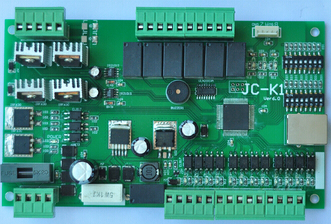The basic performance of FPC connectors can be divided into three categories: mechanical performance, electrical performance and environmental performance.
1. Mechanical properties
As far as the connection function is concerned, the insertion and extraction force is an important mechanical property. Insertion and extraction force is divided into insertion force and extraction force (extraction force is also called separation force), the requirements of the two are different. There are regulations for maximum insertion force and minimum separation force in the relevant standards, which shows that from the point of view of use, the insertion force should be small (there are low insertion force LIF and no insertion force ZIF structure), and if the separation force is too small, It will affect the reliability of the contact.
Another important mechanical property is the mechanical life of FPC connectors. Mechanical life is actually a durability indicator, which is called mechanical operation in the national standard GB5095. It takes one insertion and one unplugging as a cycle, and whether the FPC connector can normally complete its connection function (such as contact resistance value) after the specified plug-in cycle is used as the judgement basis.

The insertion and extraction force and mechanical life of FPC connectors are related to the contact structure (positive pressure), the coating quality of the contact part (the sliding friction coefficient) and the dimensional accuracy of the contact arrangement (alignment).
2. Electrical performance
The main electrical properties of FPC connectors include contact resistance, insulation resistance and dielectric strength.
1. Contact resistance High-quality electrical FPC connectors should have low and stable contact resistance. The contact resistance of FPC connectors ranges from a few milliohms to tens of milliohms.
2. Insulation resistance is a measure of the insulation performance between the contacts of the electrical FPC connector and between the contacts and the shell. Its magnitude ranges from hundreds of megohms to several thousand megohms.
3. Dielectric strength, or withstand voltage, dielectric withstand voltage, is the ability to withstand the rated test voltage between the contacts of the FPC connector or between the contacts and the shell.
4. Other electrical properties Electromagnetic interference leakage attenuation is to evaluate the electromagnetic interference shielding effect of FPC connectors, and electromagnetic interference leakage attenuation is to evaluate the electromagnetic interference shielding effect of FPC connectors. Generally, it is tested in the frequency range of 100MHz~10GHz.
FPC connector Derui FPC connector
For radio frequency coaxial FPC connectors, there are also electrical indicators such as characteristic impedance, insertion loss, reflection coefficient, and voltage standing wave ratio (VSWR).
Due to the development of digital technology, in order to connect and transmit high-speed digital pulse signals, a new type of FPC connector, namely high-speed signal FPC connector, has appeared. Correspondingly, in terms of electrical performance, in addition to characteristic impedance, some new ones have appeared. Electrical indicators, such as crosstalk (crosstalk), transmission delay (delay), time lag (skew), etc.
3. Environmental performance
Common environmental properties include resistance to temperature, humidity, salt spray, vibration, and shock.
1. Temperature resistance At present, the maximum working temperature of FPC connectors is 200 degree Celsius (except for a few high-temperature special FPC connectors), and the lowest temperature is -65 degree Celsius. When the FPC connector is working, the current generates heat at the contact point and causes a temperature rise. Therefore, it is generally believed that the working temperature should be equal to the sum of the ambient temperature and the temperature rise of the contact point. In some specifications, the maximum allowable temperature rise of the FPC connector under the rated operating current is clearly specified.
2. Humidity resistance The intrusion of moisture will affect the insulation performance of the connection and rust the metal parts. Constant heat and humidity test conditions are relative humidity 90%~95% (up to 98% according to product specifications), temperature +40±20°C, test time is as per product specifications, at least 96 hours. The alternating damp heat test is more stringent.
3. Salt spray resistant FPC connector works in an environment containing moisture and salt, the metal structure and contact surface treatment layer may produce galvanic corrosion, which will affect the physical and electrical properties of the FPC connector. In order to evaluate the ability of electric FPC connectors to withstand this environment, a salt spray test is specified. It hangs the FPC connector in a temperature-controlled test box, sprays out a sodium chloride solution with a specified concentration with compressed air to form a salt fog atmosphere, and its exposure time is specified by the product specification, which is at least 48 hours.
4. Vibration and shock Vibration and shock resistance are important performances of electric FPC connectors. They are particularly important in special application environments such as aviation and aerospace, railway and road transportation. It is used to test the mechanical structure of electrical FPC connectors for robustness and electrical resistance. An important indicator of contact reliability. There are clear regulations in the relevant test methods.
In the shock test, the peak acceleration, duration and shock pulse waveform, as well as the interruption time of electrical continuity should be specified.
5. Other environmental performance According to the requirements of use, the other environmental performance of the electric FPC connector includes airtightness (air leakage, liquid pressure), liquid immersion (resistance to specific liquids), low air pressure, etc.
FPC connector
The above is all the details about the three major performances and characteristics of FPC connectors. I hope I can help you.